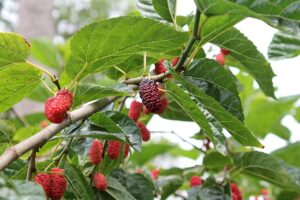Think of a garden that mostly takes care of itself—a space where plants thrive year after year without needing to be replanted. Sounds dreamy, right? Welcome to the world of permaculture perennials. If you’re a fan of sustainable gardening or simply want a low-maintenance edible paradise, this guide is for you.
What Are Perennials, and Why Should You Care?
Perennial plants are superheroes in the plant world—living for multiple years and producing food, flowers, or foliage year after year. Unlike annuals, which require replanting every season, perennials stick around, offering consistency without the constant labor.
Why Use Perennials in Permaculture?
- Less Work: Reduced annual planting gives you more time to sip lemonade while admiring your hard work.
- Happy Soil: Perennials help maintain soil health by reducing erosion and supporting beneficial microorganisms.
- Consistent Harvests: Once established, they provide reliable food production.
- Ecological Stability: They create habitats for wildlife, support pollinators, and increase biodiversity.
Now, let’s dig into the plants that could transform your garden into a permaculture heaven.
Edible Perennial Fruit-Bearing Plants
A. Tree Fruits
Tree fruits are the stalwarts of any permaculture design. Plant them once, nurture them, and enjoy their luxurious harvests for decades. Common picks include:
- Apple Trees: Go for multiple varieties to get a range of fruit from tart Granny Smiths to sweet Fujis.
- Pear Trees: Perfect for fresh eating or preserving.
- Plum Trees: Easy to grow and impossible to resist.
- Cherry Trees: Sour or sweet, they’re a hit for desserts and jam alike.
- Quince: A less common gem but beloved by those who crave homemade jelly.
B. Berry Bushes
Here’s the secret to endless berry desserts and smoothies—berry bushes. They’re easy to grow and often require minimal care. Try planting:
- Blueberries
- Raspberries
- Blackberries
- Gooseberries
- Currants (Red, Black, White): Add a splash of variety to your jams and cordials.
C. Vine Fruits
Need some vertical interest? Perennial vines bring beauty and function to your garden.
- Grape Varieties: Perfect for snacking or DIY wine.
- Hardy Kiwis: Think kiwi, but bite-sized and cold-tolerant—a win-win.
- Passionfruit: While it needs a sheltered spot to thrive in cool climates, it’s worth the effort.
Perennial Vegetables and Greens
A. Root Crops
These underground wonders return year after year with minimal effort.
- Asparagus: An early spring favorite.
- Jerusalem Artichokes: Nutritious and surprisingly easy to grow.
- Horseradish: Just make sure you like spice!
- Rhubarb: Great for pies and sauces—just stick to the stalks (the leaves are toxic).
- Perennial Onions: Like onions but way less work.
B. Leafy Greens
Perennial greens are perfect fillers for salads, soups, and sautés.
- Perennial Kale: Because kale chips are always a good idea.
- Good King Henry: Grow your veggies like royalty.
- Sea Kale: Woodsy and slightly nutty in flavor.
- Sorrel: A tangy addition to any dish.
- Lovage: Celery’s cooler, perennial cousin.
Perennial Herbs
No garden is complete without culinary and medicinal herbs. These fragrant perennials bring beauty and benefits in equal measure. Plant these staples:
- Sage
- Thyme
- Oregano
- Mint (but keep it contained unless you want it to take over!)
- Chives
- Rosemary
- Lavender
Nitrogen-Fixing Perennials
The unsung heroes of healthy soil, nitrogen-fixers are a must-have for building a resilient permaculture system.
- Siberian Pea Shrub: A robust, multi-functional plant.
- Alfalfa: Not just for livestock, it improves soil health too.
- Clover Varieties: Great for ground cover and soil enrichment.
- Comfrey: A gardener’s best friend, perfect for compost tea and mulch.
Design Considerations for Temperate Climates
To make your perennials thrive in a temperate climate, careful planning is essential.
A. Zoning Strategies
- Understand your microclimates and group plants accordingly.
- Use windbreaks and shelter placement to protect delicate plants.
- Mix and match with companion planting to create a harmonious garden.
B. Soil Preparation
- Build deep, nutrient-dense perennial beds.
- Use mulching techniques to retain moisture and reduce weeds.
- Amend the soil with compost or natural fertilizers for long-term nutrition.
Maintenance Made Simple
While perennials need less attention, occasional maintenance ensures they stay happy and productive.
- Pruning Strategies: Keep plants neat and healthy.
- Winter Protection: Mulching and cloches go a long way during cold months.
- Propagation Techniques: Share extra plants with neighbors or expand your own garden.
- Pest Management: Attract beneficial insects or use organic pest-control methods.
The Ecological Benefits of Perennials
Perennials don’t just benefit you—they also support local ecosystems.
- Create habitats for birds, insects, and small mammals.
- Boost pollinator activity with flowers and fruits.
- Store carbon in the soil, contributing to climate change mitigation.
- Enhance biodiversity, making your garden a bustling hub of life.
Challenges and Solutions
No system is perfect—but with preparation, most problems can become opportunities.
- Climate Variability: Opt for resilient cultivars and diversify plantings for protection.
- Pest Pressure: Encourage natural predators or use handmade deterrents.
- Disease Management: Rotate crops for annuals planted alongside your perennials and scout regularly for issues.
Regional Considerations
Your choice of perennials should adapt to local conditions. For example:
- Pacific Northwest: Leverage the abundant rainfall with moisture-loving plants.
- Midwest: Focus on wind-resilient perennials and deep-rooted plants.
- Northeast: Cold-hardy varieties and good drainage are your best bet.
- Southeast US: Opt for heat-tolerant plants and prioritize pest-resistant options.
- Southwest US: Choose drought-tolerant plants and use shade to reduce water needs.
Final Thoughts
Permaculture perennials bring so many benefits, from delicious harvests to a more sustainable lifestyle. Whether you’re just getting started or improving an existing system, there’s always room to grow!
Inspired and ready to start your perennial garden? Share your progress or tips in the comments below!

